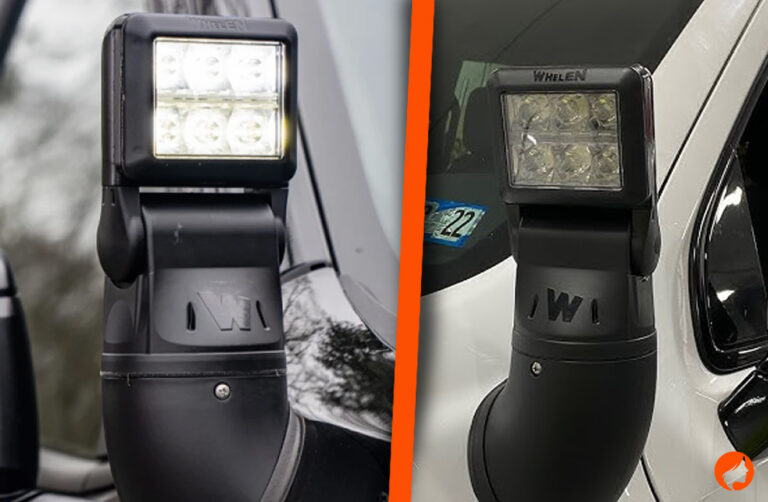The Role Of Emergency Vehicle Lights In Public Safety
Flashing lights on emergency vehicles do far more than grab the attention of passing motorists. They serve as critical signals, alerting drivers to the urgent presence of police, fire, and medical rescue teams as they navigate through traffic. When seconds count, any delay can mean the difference between life and death, especially in cases such as cardiac arrest, structure fires, or traffic collisions. Modern emergency vehicle lights have evolved not only to be brighter and more energy-efficient but also to cut through rain, fog, and darkness, enhancing visibility in challenging conditions. This visibility provides first responders with clear access routes, thereby minimizing the risk of collisions. For those seeking a comprehensive overview of the basics involved in emergency lighting installation or needing guidance for their fleets, click here for well-organized information and practical tips that address both straightforward and technical aspects of the process.
Types Of Emergency Vehicle Lights
Emergency vehicles are equipped with different lighting systems, each customized to enhance visibility under diverse circumstances. Understanding these types is essential, whether you manage a public fleet, volunteer, or are simply curious about the systems passing by on your daily commute.
- Lightbars: Traditionally mounted on the bulkhead or roof, lightbars provide sweeping 360-degree visibility. Their high placement lets them be seen from long distances, even when vehicles are traveling in dense traffic.
- Grille Lights: Installed in or adjacent to the front grille, these lights produce bright, focused warnings directly in the paths of oncoming drivers. Grille lights are especially useful for low-profile vehicles or when discreet signaling is needed until a full response is warranted.
- Dash Lights: These compact, easily removable lights are often chosen for unmarked patrol cars or privately-owned vehicles used for volunteer emergency response. Placing them inside the front windshield ensures important warnings are visible up close.
- Rear Warning Lights: Located on or near the rear bumper, these lights are vital for protecting personnel working behind a vehicle, such as paramedics loading injured individuals or firefighters accessing equipment.
Departments are increasingly adopting multi-zone lighting schemes that automatically activate certain lights depending on whether the vehicle is stationary, braking, or responding to an incident. This approach tailors warnings to specific situations, improving safety and minimizing unnecessary distractions for other road users.
Key Features of Modern Emergency Lighting
- LED Technology: LEDs have become the gold standard for emergency vehicle lights, offering up to 50,000 hours of life and dramatically reducing maintenance costs. Their bright, crisp light remains effective even on sunny days, while their low energy consumption minimizes strain on vehicle batteries and electrical systems.
- Custom Flash Patterns: Today’s control modules allow users to program custom flash sequences to indicate different types of crises or vehicle roles. For example, alternating colors and strobe patterns can differentiate between police pursuits and routine traffic stops.
- Weather Resistance: The incorporation of shatterproof polycarbonate lenses and robust sealing safeguards lights from water, dust, and extreme temperatures, ensuring they function reliably during storms, floods, and heat waves.
- Remote Operation: Advanced, user-friendly control panels installed within easy reach put every lighting zone and function at the operator’s fingertips. Remote operation not only saves precious seconds but also allows drivers to maintain their focus on safe maneuvering.
Modern lighting systems also feature automatic battery protection and system diagnostics, ensuring that vehicles are always mission-ready and minimizing the risk of failure in high-stakes situations.
Regulations And Compliance Considerations
The use of emergency vehicle lights is governed by a range of regulatory controls, designed to ensure clarity and consistency on the road. Different colors, typically red, blue, amber, or white, are assigned to specific agencies and roles, reducing the potential for confusion. The light intensity, angle of visibility, and mounting position are also regulated to ensure effectiveness without blinding nearby drivers.
While most requirements are set at the state level, overarching federal rules also apply to certain vehicle classes and uses. Staying up to date is not just a matter of best practice; non-compliance can result in penalties or, worse, compromised safety at the critical moment.
Regular policy reviews are vital, especially as new studies and technologies drive regulatory updates. Departments should consider offering ongoing training and recertification opportunities to ensure everyone is on the same page.
Routine Maintenance And Troubleshooting
Just as important as the initial installation, regular maintenance is what keeps emergency lights operating at peak condition. Whether you manage a single ambulance or a municipal fleet, establishing a scheduled, proactive inspection routine helps prevent unexpected breakdowns.
- Wipe down lenses frequently to prevent dust and debris from obscuring brightness.
- Inspect connections, wiring, and mounts for corrosion, fatigue, or other signs of wear.
- Address flickering, dimming, or erratic flash patterns as soon as they arise—small issues can quickly snowball into critical failures.
- Re-tighten mounts and brackets periodically to avoid vibration-related failures.
Must Read: How Residential Security Goes Beyond Alarms and Cameras
